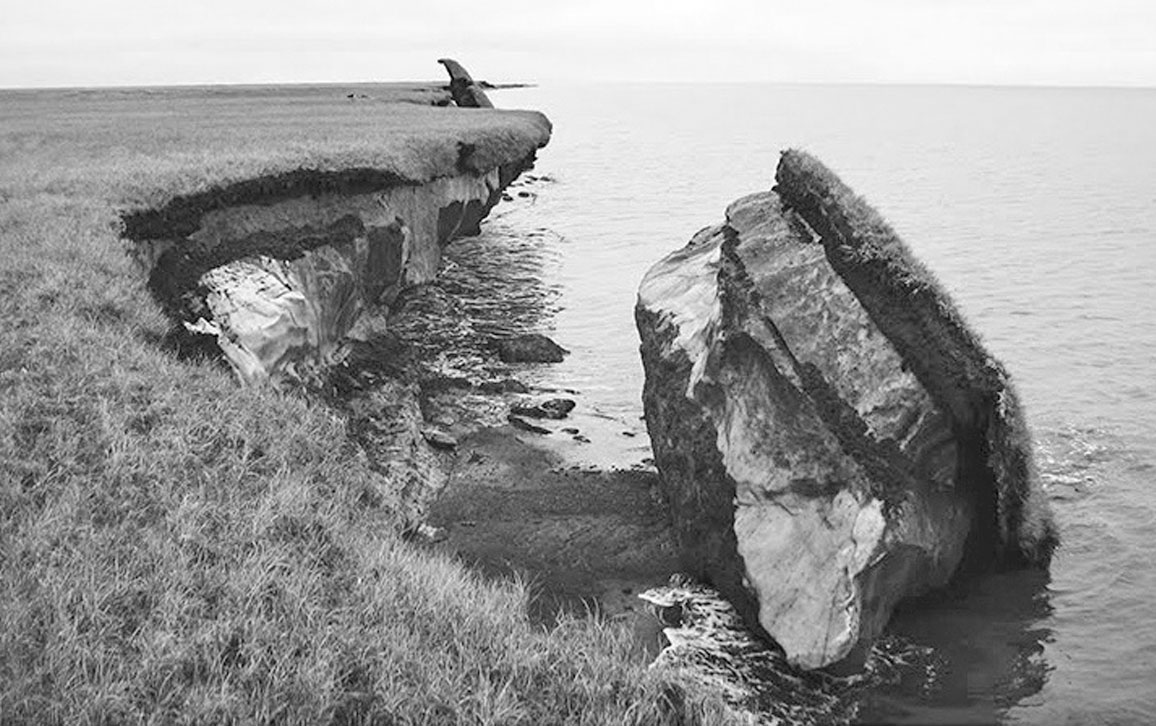
This Article From Issue
September-October 2019
Volume 107, Number 5
Page 315
VANISHING ICE: Glaciers, Ice Sheets, and Rising Seas. Vivien Gornitz. 381 pp. Columbia University Press, 2019. $34.99.
In Vanishing Ice: Glaciers, Ice Sheets, and Rising Seas, Vivien Gornitz depicts dramatic recent changes in Earth’s cryosphere (the places where water is frozen into ice or snow), describing in detail the mounting evidence that an accelerating meltdown is taking place: Permafrost is thawing, summer sea ice is declining, ice shelves are crumbling, and glaciers are retreating. Gornitz’s goal is to raise public awareness of these changes, and to make it clear that ice plays an important role in planetary processes and is thus vital to our future well-being. She emphasizes that loss of ice on this scale will have global consequences by causing a menacing rise in sea levels and by amplifying temperature increases through feedback loops. To estimate how long the ice we have now may last, and to contextualize present-day change, she examines the records of past climates, looking back at changes in the cryosphere and variations in sea level during the Quaternary Period (from about 2.6 million years ago to the present).

From Vanishing Ice.
Gornitz writes with a sense of urgency, but she manages to avoid sensationalism, relying instead on the steady accretion of scientific facts (substantiated by references to high-quality original sources), and on vivid descriptions such as the following, which bring the subject matter to life:
The effects of deicing the permafrost sweep across the Arctic. Trees tilt at crazy angles like drunken sailors, coastal cliffs crumble, wave-battered shorelines wash away, highways buckle, buildings sag and collapse, and lakes in the tundra appear and disappear as the changing climate transforms the regional ecology, hydrology, and landscape.
Gornitz is a geologist and was formerly a special research scientist with the Columbia University Center for Climate Systems Research and the NASA Goddard Institute for Space Studies. In Vanishing Ice she provides an intelligent and thoughtful overview of the methods and findings of contemporary glaciological analysis. The book is nuanced and informative. It thoroughly summarizes current research by well-respected scientists, and its theoretical framework is up to date. Both undergraduates and specialist academics with interests in global ice are likely to find it useful.
However, Vanishing Ice is likely to appeal most to curious people who have some scientific background or who already have an interest in climate change and its effects on global ice volume. The book may seem at first glance to be rather academic and dry, in part because it is illustrated with black and white figures, diagrams, and maps and contains tables of data. But it is not an academic textbook. The writing style is engaging and accessible. The book’s focus is on how and why climate change is affecting the frozen world and society, but Gornitz also manages to convey some of the romanticism of polar exploration through her descriptions of beautiful glacial landscapes:
Antarctica is indeed a place unlike anywhere else on Earth—the closest thing to an alien planet. It is a barren world of snow, ice, bare rock, sky, incredible shapes, and a few colors—a stark land of overwhelming beauty—a rhapsody in sparkling, brilliant white; somber grays; browns; coal black; and the most intense shades of cerulean, turquoise, teal blue, sapphire, cobalt, and ultramarine blue. The continent abounds in sharp contrasts—ice pinnacles sculpted into fantastic shapes by wind and waves floating in a dark, slate-blue, foam-flecked sea; massive aquamarine-tinged flat-topped ice shelves girding a mountainous interior . . . and everywhere, a land buried under so much ice that only the highest mountain peaks protrude above vast white plains extending as far as the eye can see—an endless carpet of ice crisscrossed by gaping crevasses and fast-moving ice streams.
Gornitz provides clear explanations without using technical language. The book assumes no expertise in glaciology, and key concepts, such as the equilibrium line altitude (the point at which annual snow accumulation matches losses), are explained as they are introduced. It is therefore advantageous to read the book cover to cover rather than just dipping into it, because later chapters sometimes assume an understanding of concepts that have been explained earlier.
After introducing the reader to the book’s subject matter by touching on such topics as the history of polar exploration and polar science, changes in the cryosphere over the past few decades, and what the greenhouse effect is, Gornitz goes on to cover in admirable depth, one chapter at a time, the following subjects: the key processes affecting the different kinds of floating ice (sea ice, ice shelves, and icebergs); the defrosting permafrost and what it portends; glaciers (their plumbing, how they move, methods of assessing their well-being); the Greenland ice sheet (its topography, ice quakes, and changes in albedo and surface melt); Antarctica (its aprons of ice, hidden mountains and volcanoes, dry valleys, meteorites, and buried lakes, and the West and East Antarctic Ice Sheets); changes in the Antarctic and Greenland ice sheets over the past few million years; and the likely future of the ice sheets over the rest of this century.
Gornitz handles the chapter on Antarctica particularly well, thoroughly explaining the complex web of factors and forces on which the stability of Antarctica’s ice streams depends. The future stability of the Antarctic ice sheets is crucially important and difficult to predict. Although the East Antarctic Ice Sheet has in general remained stable or expanded, NASA glaciologist H. Jay Zwally expects that within a few decades the buildup of ice and snow there will be outweighed by increasing ice losses on the coast of West Antarctica and the Antarctic Peninsula. Some other scientists disagree, and Gornitz explores the controversy, discussing in detail the possibility that the West Antarctic Ice Sheet (WAIS) is “on shaky ground.” She explains the marine ice sheet instability hypothesis, which maintains that ocean-driven thinning of ice shelves may be playing an important role, and discusses the possibility that, over centuries or millenia, such thinning could provoke a complete WAIS meltdown, causing sea levels to jump 3.3 meters.
In the book’s final chapter, having clearly shown us that ice loss is being driven by climate change and is having profound effects on society (through rising sea levels, changes in access to water resources, and increased flooding, for example), Gornitz closes by calling on us “to awaken from our complacency” and implores us to make “a timely transition to a decarbonized energy future.”

American Scientist Comments and Discussion
To discuss our articles or comment on them, please share them and tag American Scientist on social media platforms. Here are links to our profiles on Twitter, Facebook, and LinkedIn.
If we re-share your post, we will moderate comments/discussion following our comments policy.